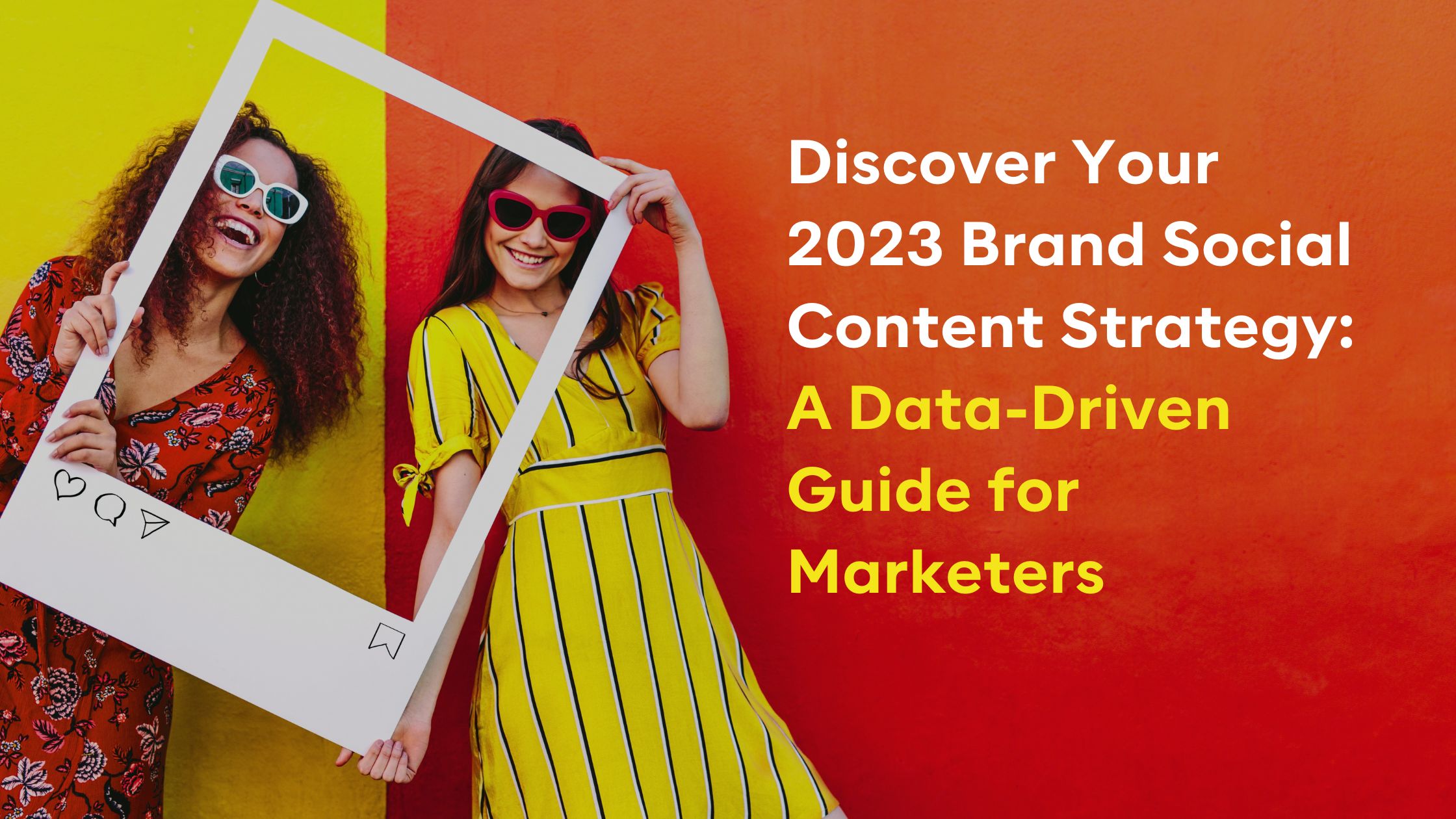This week we take a quick look at social media and what brands should be thinking about in 2023. Specifically looking at content and media choices, so let’s dive in:
The TL: DR
- Social media is visual, and marketers who use it to their advantage are primed to win.
- You are probably not posting enough.
- As brands, we can still produce more valuable content, and the social media algorithms will still reward us.
- TikTok is cool, but don’t let it blindside you from other beneficial social media opportunities.
On a side note: If you’d like me to bring content like this to your next conference, book me as your keynote speaker.
Content types
We work a lot with our partner Sprout Social, who released The 2023 Content Benchmark Report, which shows an exciting breakdown of content types and engagement rates.
Social media is visual, and marketers who use it to their advantage are primed to win. As expected, short-form video continues to reign supreme, with two-thirds of consumers (66%) engaging with this content. An obvious second place was static images coming in at a close second with 61% engagement.
A more interesting data point reinforced that social media users do not like being caught up in long content engagements and that it’s not all about the content type. Text-Based posts get better attention than Long Form videos. Showcasing that video is not the win – short-form content is. Audio content is the lowest media type on social media engagement – most likely because social networks are not prioritising audio content at all; most audio content shared would be podcast (unwanted long-form content ) shares or audio music, where music videos or lyric videos are the preferred medium to consume this content.
Content Frequency
There is going to be considerable debate in 2023. In The 2023 Content Benchmark Report from Sprout Social, they benchmarked data across more than 523 million messages from 729,000 public social profiles that were active between January 1, 2022, and September 30, 2022. Data includes Facebook, Google My Business, Instagram, LinkedIn company pages, Pinterest, TripAdvisor, and Twitter posts.
Their results stand in the face of the new conventional wisdom that posting less content produces better results. They have broken their data into industry-specific sections so you can see how you compare to your industry. Over the past few years, many brands have reduced content schedules to posting 2-3 times a week to get better engagement per post. However, according to Hootsuite, even the recommended reduced posting schedules are much more frequent than many brands currently produce. In short, the key insights coming through suggest:
- Daily posts on LinkedIn are building the best engagement.
- If you are engaging in TikTok, you should be looking to content schedules of 4-5 posts a day – a tricky feat for any brand entering the Tik Tok ecosystem today.
- It would be best if you were aiming for between 1 and a half posts to 4-5 posts on Facebook daily.
- And two posts a day on Instagram has become that accepted norm.
This works out to an average of 11 posts daily, which is dramatically lower than what most African Brands are producing today. It can go a long way to explain why our consumers are so influenced by global brand content, not local brands.
This data is supported in The 2023 Content Benchmark Report, but there are very specific industry outliers and nuances which should be noted; a few examples I find interesting to note are:
- The Media and Entertainment industry tends to average 21 posts a day and has the second-highest level of inbound engagements at 334
- Sports pages receive the most inbound attention in general across all industries.
- Food and Beverage, Banking, Financial Services, Legal and Non-profits tend to post below the norm at 7-9 posts a day. Which I would assume has more to do with working with fewer channels than producing less content.
Content frequency should always be viewed through a localised lens, an understanding of your audience and, most notably and transparent communication strategy. Creating high volumes of inane content to meet content volume targets is more detrimental to your brand reputation than not meeting the demands of content frequency. It does seem, however, that for many brands and businesses, we can still do a lot to add value to our customers by producing valuable content, and the social media algorithms will still reward us.
Content Channels
TikTok will be the powerful platform brands will naturally look to as the industry follows its hype as the most powerful platform on the internet. I agree that Tiktok is valuable to your media strategy, especially considering the shifts as consumers move away from social media networks and towards content creator platforms. However, I would advise you to know what is happening in the rest of the content and social industry to ensure you understand where the real pockets of value lie.
Social Media remains the most prominent digital asset for building brand awareness and value. Its access to people and targeting capability is vastly superior and opens the door to getting your brand in front of all the right people en masse.
Google is providing better value to content creators with their YouTube shorts by sharing ad revenue. Currently, TikTok offers creators fame, and Youtube provides revenue channels – you may find creators prioritising revenue-driving channels. Additionally, Google’s advertising engines are still superior to TikTok; Meta Business Advertising offers a much broader reach into more extensive demographics and niche audiences. New networks like Mastodon are trying to put the social network back into the hands of the people, which may provide new opportunities for aligned brands.
If you’d like a copy of The 2023 Content Benchmark Report, send me a message on Linkedin, and I will send it to you.






